Before Mary: The Ancestresses of Jesus
013
This article is based on the writings of Jane Schaberg and appears here with her approval.
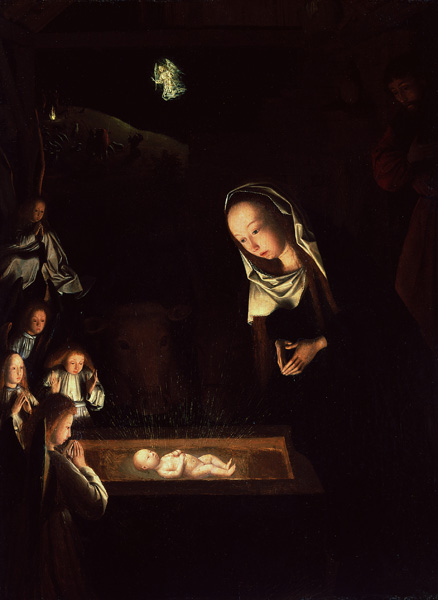
The opening verses of the Gospel of Matthew trace the ancestry of Jesus back to the patriarch Abraham. Not surprisingly, Jesus’ genealogy is an illustrious one, including Jacob, Judah, David, Solomon and Hezekiah. Somewhat unusually, however, the list (reprinted) includes four women from the Hebrew Bible. In Matthew’s Jewish world, genealogies typically mentioned only men.1 Even more surprisingly, the four women—Tamar, Rahab, Ruth and “the wife of Uriah” (that is, Bathsheba)—have somewhat spotty reputations. What prompted Matthew to include a prostitute (Rahab), a woman who pretended to be a prostitute (Tamar), a sexually forward widow (Ruth), and a woman taken in adultery (Bathsheba) in his “account of the genealogy of Jesus the Messiah, the son of David, the son of Abraham” (Matthew 1:1)?
Scholars generally agree that Matthew viewed these four women as precursors to Jesus’ mother, Mary, the fifth and final woman in the genealogy. But how? What did all four women have in common with Mary? Before we can answer this question, we must first identify the women and determine what Matthew may have known about them based on the biblical and extrabiblical texts current in his day.2
014
Tamar
“…and Judah the father of Perezand Zerah by Tamar…”
(Matthew 1:3)
Although the Hebrew Bible tells of two famous Tamars, Matthew is clearly referring here to the Tamar of the Book of Genesis (and not King David’s daughter). This Tamar’s story is told in Genesis 38, where we read that she is taken by the patriarch Judah as a wife for his son Er, who was “wicked in the sight of Yahweh; and Yahweh slew him” (Genesis 38:7). According to the law of the levirate marriage, recorded in Deuteronomy 25:5–10, Er’s brother Onan is now obliged to have intercourse with Tamar and produce a male descendant for Er. But Onan refuses. When he lies with Tamar, he practices coitus interruptus, for which he in turn is slain by Yahweh. Fearful that his third son, Shelah, might suffer a similar fate, Judah tells Tamar to return to her father’s home and wait for Shelah to “grow up.” Secretly, he hopes to keep his third son away from Tamar forever.
Eventually, Tamar realizes what Judah is up to and, for the first time, she takes matters into her own hands. Dressed as a prostitute with a veil over her face, she lies in wait beside a road where she knows Judah will pass. The disguise works. Judah mistakes his daughter-in-law for a harlot and has intercourse with her. Tamar insists he give her his seal and staff as a pledge of later payment.
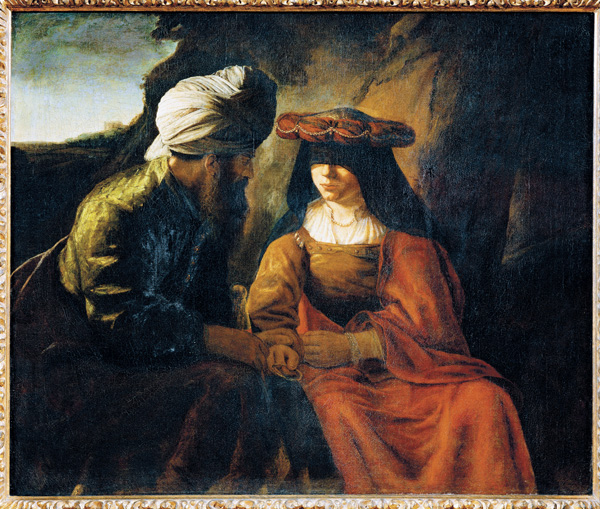
As Tamar’s pregnancy begins to show, she is accused of being “with child by harlotry” (Genesis 38:24). Her father-in-law, still unaware of his involvement in the case, pronounces the terrible death by burning, which Leviticus prescribes for exceptional cases of forbidden intercourse (see, for example, Leviticus 20:15, 21:9). The death sentence is overturned, however, when Tamar produces the seal and staff of the man who impregnated her. Judah immediately recognizes them as his own and admits, “She is more righteous than I, inasmuch as I did not give her to my son Shelah” (Genesis 38:26).
Though Tamar’s action borders on the criminal, she is not guilty and the line of Judah continues through her. As biblical scholar Brevard Childs wrote, “Judah demonstrated an unfaithfulness which threatened to destroy the promise of posterity, which was only restored by the faithfulness of a Canaanite wife.”3
However, just whose wife Tamar was, if anyone’s, remains unclear. The Book of Genesis tells us Judah “did not lie with her again” (Genesis 38:26), but we are never told that she became Shelah’s wife. This 015strange ending to the story leaves the reader with the impression of a legitimated illegitimacy. Tamar herself has acted to secure her rights and demonstrate her righteousness. Suspected of bringing death and disgrace, she has in the end brought life. In truth, she shows more loyalty to the name of Judah than Judah himself does: She risks her life in order to bear a son who would continue her husband’s name and the covenant promise. And she is rewarded for these actions. Judah’s acknowledgment of Tamar as the mother of his children-to-be regularizes her position in society.
Later biblical genealogies, including Matthew’s, identify Tamar’s children as Judah’s legitimate sons (see also 1 Chronicles 2:4). Extrabiblical rabbinic sources generally mention her place in David’s ancestry in order to castigate his genealogical purity.4 Yet, even these sources highlight Tamar’s righteousness.5 The first-century Jewish philosopher Philo of Alexandria hailed Tamar as a sign of victory6 and of chastity “inviolate, undefiled and truly virginal.”7
Rahab
“…and Salmon the father of Boaz by Rachab, and Boaz the father of Obed by Ruth…”
(Matthew 1:5)
Matthew’s inclusion of a woman named Rachab in Jesus’ genealogy cannot be fully explained by either biblical nor extrabiblical traditions. Most scholars identify her with the Hebrew Bible prostitute Rahab of Jericho, who shelters Joshua’s two spies. But neither the Hebrew Bible or extrabiblical literature supports Matthew’s statement that Rahab was an ancestress of David and that she gave birth to Boaz, Ruth’s husband-to-be. This is especially problematic because the prostitute Rahab lived during the Conquest, about 200 years before Boaz and Ruth. The church father Origen (c. 185–254 C.E.) speaks of Matthew’s Rachab as “an insignificant woman, mentioned nowhere else in Scripture, who has dropped ex machina—so to speak—into the sphere of the Gospel.”8 Most modern scholars, however, conclude that it is virtually certain that Matthew means the Rahab of the conquest.9 This is because it seems far more likely Matthew would have conflated the chronology than he would have listed a “nobody” among Jesus’ ancestors.
Rahab’s story is told in the Book of Joshua, chapters 2 and 6. Two men sent by Joshua to spy out the Canaanite city of Jericho “came into the house of a harlot whose name was Rahab, and lodged there” (Joshua 2:1). The reader is not told why they chose her home or why she received them; presumably her business reputation attracted them. The narrator does not scorn or condemn Rahab’s harlotry. Apparently, 016she was accepted as an outcast who survived in an institutionalized status outside the family unit, beyond the normal social structure and its boundaries and rules. Nor does the narrator question the spies’ visiting a prostitute. A prostitute’s sexual activity, not under the control of a husband or father, was probably tolerated if not encouraged as long as it did not disrupt the paternity system.10
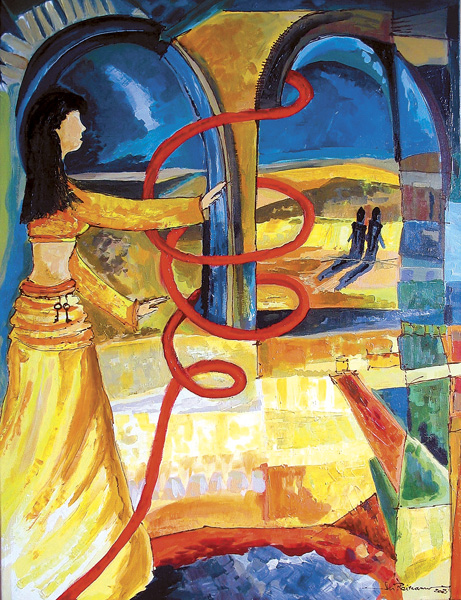
The Canaanite king of Jericho learns of the spies’ incursion and orders Rahab to give them up. But, in a surprising move, Rahab defies her king by hiding the spies on her roof and by sending their pursuers off on a false trail. She tells the spies, “I know that … Yahweh your God is he who is God in heaven above and on the earth beneath” (Joshua 2:9–11). In return, Rahab extracts the spies’ promise that she and her father’s house will be allowed to live when the Israelites conquer the city. She then helps the spies escape through a window in her home in the city wall. Before they climb down to safety, they tell her to tie a scarlet cord in her window so that the Israelite army will know which house to spare.
Joshua honors the spies’ promise to Rahab. When Jericho and all within it are destroyed, “Rahab the harlot, and her father’s household and all who belonged to her, Joshua saved alive; and she dwelt in Israel to this day, because she hid the messengers whom Joshua sent to spy out Jericho” (Joshua 6:25).
Rahab, like Tamar, was a survivor in the world of men. Through her ingenuity and faith, she saved the spies from the Canaanites and her own family from the Israelites. Rabbinic tradition emphasizes Rahab’s extreme generosity in order to emphasize her repentance and conversion to Israel’s god. Similarly, in 017Christian tradition, the Letter to the Hebrews and the Letter of James emphasize her hospitality to the spies: “A person is justified by works and not by faith alone … Was not Rahab the prostitute also justified by works when she welcomed the messengers and sent them out by another road?” (James 2:25).
According to rabbinic tradition, Rahab later marries Joshua and becomes the ancestress of several prophets. The tradition Matthew cites, in which Rahab marries Salmon and gives birth to Boaz, is not known from any other source. There may well have been more to this lost story that influenced Matthew’s decision to include Rahab in his genealogical list.
Ruth
“…and Boaz the father of Obed by Ruth…”
(Matthew 1:5)
According to feminist scholar Phyllis Trible, the Book of Ruth is the tale of how two women, Ruth and Naomi, found a future—and salvation—for themselves. The women’s story begins during a time of famine in Judah. Food is so scarce that Naomi, her husband Elimelech, and her two sons, Mahlon and Chilion, are forced to leave their home in Bethlehem and settle in Moab. Here, Elimelech eventually dies and Mahlon and Chilion marry two local women, Ruth and Orpah. When Mahlon and Chilion also die ten years later, Naomi, Ruth and Orpah are left childless widows, social misfits, with no security, worth, protection or identity in the male-dominated culture.
Phyllis Trible writes:
With consummate artistry, the Book of Ruth presents the aged Naomi and the youthful Ruth as they struggle for survival in a patriarchal environment. These women bear their own burdens. They know hardship, danger, insecurity and death. No God promises them blessing; no man rushes to their rescue. They themselves risk bold decisions and shocking acts to work out their own salvation in the midst of the alien, the hostile, and the unknown.11
Ruth and Naomi’s “salvation” is their eventual integration into the patriarchal social structure, outside of which there was believed to be no salvation. As Hebrew Bible scholar Baruch A. Levine notes, “The overriding concern of the author of Ruth is the history of the royal line of Judah.”12
After Mahlon and Chilion die, Naomi decides to return home to Judah, “for in the country of Moab she had heard that the Lord had taken note of His people and given them food” (Ruth 1:6). Ruth unexpectedly elects to link her destiny with Naomi’s and returns with her to the latter’s homeland, Judah. In Bethlehem, where they settle, Naomi has a kinsman named Boaz who is “a man of substance” (Ruth 2:1). By chance (or at least according to the patriarchal designs of the narrator), when Ruth goes in search of food, she ends up gleaning—gathering the leavings of reapers—in Boaz’s field. They meet, and she acquires his favor; he encourages her to glean only in his field and to drink freely from his well. When Naomi learns of the kindness of this relative, she contrives to “seek a home” (Ruth 3:1) for Ruth. She told her, “Now is not Boaz our kinsman, with whose maidens you were with? See he is winnowing 018barley tonight at the threshing floor. Wash therefore and anoint yourself, and put on your best clothes and go down to the threshing floor; but do no make yourself known to the man until he has finished eating and drinking. But when he lies down, observe the place where he lies; then go and uncover the lower part of his body [usually translated ‘feet,’ a euphemism for ‘genitals’]; and he will tell you what to do” (Ruth 3:2–4).
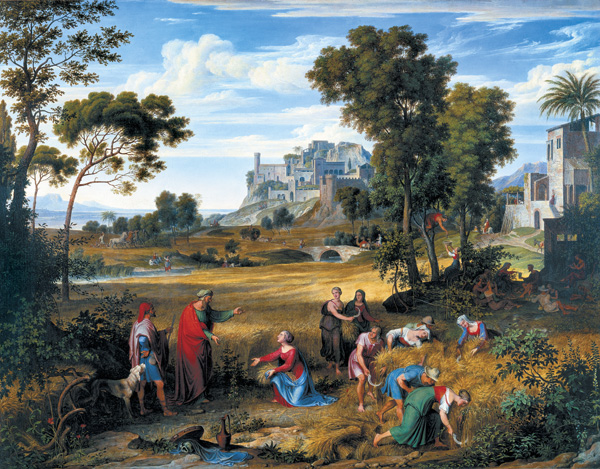
Ruth obeys, but instead of waiting for Boaz to take charge and tell her what to do, she tells Boaz, “Spread your wing over your maidservant, for you are a redeemer” (Ruth 3:9), a request that he marry her, thus fulfilling his obligation as a kinsman. Boaz’s reaction is to bless and praise her and to assure her that he will do as she asked, provided that a nearer kinsman won’t. He asks her to lie down until morning, and Ruth’s departure before dawn keeps the encounter a secret.
A nearer kinsman does exist, and when Boaz confronts him, he refuses the offer and turns over the right of redemption—that is, the right to buy Naomi’s property and to marry Ruth—to Boaz. The elders and all the people are called to witness that Boaz bought all that belonged to Naomi’s husbands and sons, including Ruth the widow of Naomi’s son, “to restore the name of the dead in his inheritance” (Ruth 4:10). The elders pray that Yahweh “make the woman who is coming into [Boaz’s] house like Rachel and Leah, who together built the house of Israel” (Ruth 4:11), reminding the reader that this, too, is a story of two women. They pray also, “May your house be like the house of Perez, whom Tamar bore to Judah, because of the children that Yahweh will give you by this young woman” (Ruth 4:12), reminding the reader of parallels between the stories of Tamar and Ruth: trickery, the levirate obligation and the taint of scandal.
“So Boaz took Ruth and she became his wife; and he went in to her and Yahweh gave her conception and she bore a son” (Ruth 4:13). The biblical narrative ends with a genealogy (Ruth 4:18–21). Four of the men listed 020are associated with the four women in Matthew’s genealogy: Perez, Salmon, Boaz and David.
In rabbinic tradition, Ruth alone among the four women of Matthew’s genealogy is free from a taint of immorality.13 Rabbinic writings and later translations carefully expunged every reference to sexual activity between Ruth and Boaz on the threshing floor. Such strenuous efforts to remove any hint of indelicacy implicitly acknowledge, however, that a different reading of Ruth’s activities as scandalous was possible, persistent and even popular. In any case, it is clear that Ruth, like Tamar, risked an accusation of harlotry and, in the end, was praised for taking the risk.
Bathsheba
“…And David was the father of Solomon by the wife of Uriah …”
(Matthew 1:6)
Bathsheba is not even mentioned by name in Matthew’s genealogy; rather, she is characterized as “the wife of Uriah.”
Bathsheba’s story is the most horrifying of the four tales repeated here. Bathsheba enters the biblical record in 2 Samuel 11, when King David, from his palace roof, spies her bathing. The reader is told nothing about her except that she “was very beautiful” (2 Samuel 11:2). (Throughout 2 Samuel 11, Bathsheba is so colorless, passive and pathetic a figure that she is almost as anonymous there as she is in Matthew’s genealogy.) When David inquires about her, he is told to whom she belongs: She is the daughter of Eliam and wife of Uriah.
Then, “David sent messengers, and took her; and she came to him, and he lay with her.” The verbs used in this verse are plain and blunt. In an aside, the narrator mentions that Bathsheba was purifying herself from her menstruation. This implies that the child she would soon conceive could not possibly be that of her husband Uriah, who is away in battle.
After returning home and realizing that she has conceived, Bathsheba sends word to David: “I am pregnant” (2 Samuel 11:4–5). Here, too, the language is blunt and detached. Nothing is said about Bathsheba’s reaction to any of this. No one speaks to her, including David. There is no hint of resistance or protest on her part (but, then, who could resist a king?) or of fear that the transgression would be discovered.
David then plots to bring Uriah home from battle and make him sleep with his wife, so that the pregnancy will appear to be his doing. But the king’s plan is foiled when Uriah refuses to enjoy the luxury of his home while his fellow soldiers are sleeping in the open field. David then sends Uriah back to war and secretly instructs his general to send Uriah into the thick of the fighting without any protection. It is a death sentence for Uriah.
Bathsheba mourns his loss: “When the wife of Uriah heard that Uriah her husband was dead, she made lamentation for her husband” (2 Samuel 11:26). We aren’t told whether the lamentation was a formality or real grief, but we are told—three times in this one verse—that this was a marital relationship. The blunt talk picks up again: “When the mourning was over, David sent and brought her to his house, and she became his wife, and bore him a son” (2 Samuel 11:27).
Does the writer of this narrative have no interest at all in Bathsheba, her motives, her ruin, her compromises? That the terseness in the text is not due to this writer’s lack of sympathy and imagination in dealing with women in general is shown by his more nuanced and sensitive portrait of David’s daughter Tamar (not the Tamar who tricked Judah), who is raped by her half-brother Amnon (2 Samuel 13). Here the author appears to be communicating his outrage at David’s treatment of Bathsheba by treating the crimes in the same rough, brutal fashion in which they were committed. Perhaps the author intended to portray not Bathsheba’s shallowness but her complete entrapment in a situation where her feelings, rights, plans and love counted for nothing. She had no recourse.
Bathsheba is not blamed, but David is. The narrator writes: “The thing that David had done displeased Yahweh” (2 Samuel 11:27). The prophet Nathan condemns David and warns him that, as punishment, evil will rise up against him out of his own house. His wives will be taken from him and given to a neighbor. The infant son born to “the wife of Uriah” will die. David fasts for seven days and prostrates himself, but he is not granted any reprieve. The boy dies. Then “David comforted his wife, Bathsheba, and went in to her, and lay with her” (2 Samuel 11:24). Nine months later, she bears a son, Solomon.
Bathsheba next appears on the scene as David approaches death. Here, she plays the role of the pawn of Nathan, who counsels her to remind David of a promise that Solomon, and not Adonijah, the eldest son, will be king. The reader has no way of knowing whether David actually made such a promise or whether this is a hoax foisted upon the old king.
In her last biblical appearance, 1 Kings 2:13–25, Bathsheba is once again a messenger, this time from Adonijah to Solomon. She delivers Adonijah’s alleged request that he be given Abishag the Shunammite, David’s concubine, royal property that should be passed on to Solomon. The last words spoken to her are Solomon’s sarcastic refusal to a woman he regarded as unable to function intelligently and independently in the world of high politics.
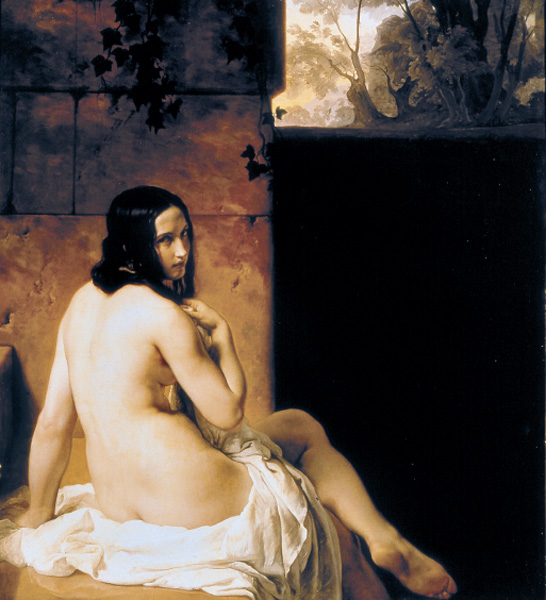
021
Bathsheba’s story, then, is the story of a woman taken in adultery, pitied rather than scorned or blamed by the storyteller. She is presented without options, without recourse, without a personal history. She does not act but is acted upon, and then she barely reacts. Her wordless submission renders her a thing passed from man to man. She personifies tragic passivity, unlike Tamar, Rahab and Ruth, who stood up against the fates offered them by society, took matters into their own hands and bettered their positions within the patriarchal framework. The Bathsheba who survives as a queen—and as a name on a genealogical list—never emerges as a person.
Later tradition tends to pass over Bathsheba while 022focusing on the crime of David. Only occasionally is she blamed for the murder of Uriah. In the writings of the first-century C.E. Jewish historian Flavius Josephus, for example, when the newly pregnant Bathsheba asks David “to contrive some way of concealing her sin,” since she fears she will receive the sentence of death as an adulteress.14 It is difficult to understand why she (and Ruth and Rahab, but not Tamar) was included among the 22 women of valor listed in the rabbinic text Midrash Ha-Gadol. It was enough, perhaps, that she was the mother of Solomon and instrumental in his acquisition of the throne.
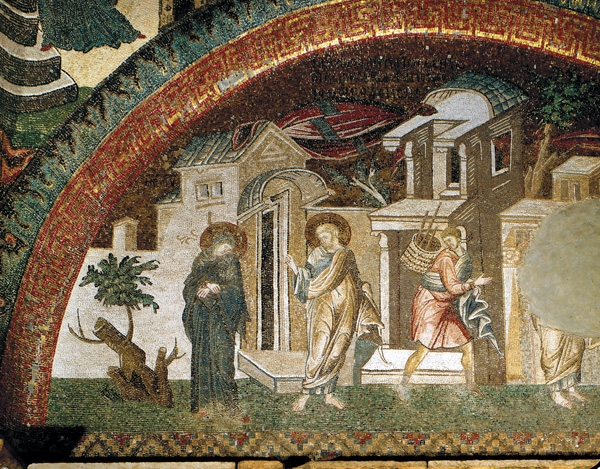
Tamar, Rahab, Ruth and Bathsheba: Why did Matthew choose to mention these four women—and not Sarah or Rachel—in the genealogy of Jesus? What did they share with Mary that might prepare the reader for the story that follows?
There are several traditional answers to this question that do not seem to work for all five women:
First, some scholars claim these women are named because they are sinners. They thus prepare the way for the presentation of Jesus as the one who will “save his people from their sins” (Matthew 1:21). Some critics argue further that as sinners they provide a clear 023contrast to the sinless Mary. However, as we have seen, the Hebrew Bible and later Jewish traditions do not present all four as sinners. Tamar’s actions only bordered on the criminal. In Matthew’s day, Rahab was celebrated for her hospitality, and Ruth’s bold sexual move was glossed over. The wife of Uriah was not blamed the way David was. Further, if Matthew is writing his genealogy in order to refute or mitigate attacks on Jesus’ legitimacy, why would he encourage further calumny by including these women?
Second, other scholars suggest that these four women are included because they were regarded as foreigners. They prepare for Matthew’s presentation of Jesus as Lord of all nations (Matthew 28:19) and show that Jesus’ own ancestry was mixed. In the Hebrew Bible, Rahab is identified as a Canaanite and Ruth a Moabitess. Bathsheba may well have been a Hittite like her husband, Uriah, and Tamar, who lived in Canaan, may have been Canaanite, but the Bible does not tell us.
However, according to this theory, the four women would not be linked to the fifth, Mary, since they have nothing in common with her. Moreover, in postbiblical Judaism Rahab and Tamar were considered Jewish proselytes.
Finally, scholars have argued that these women are mentioned because they were all involved in extraordinary or irregular sexual unions that seemed scandalous to outsiders. This is thought to prepare for the account of the extraordinary union that produced Jesus. This final theory appears to be on the right track, but it doesn’t go far enough. More significant parallels are found in each woman’s response to the scandal that ensued.
All four ancestresses have much in common with Mary:15
First, all four find themselves outside patriarchal family structures: Tamar and Ruth are childless young widows, Rahab a prostitute, Bathsheba an adulteress and then a widow pregnant with her lover’s child. Similarly, in Matthew 1:18–25, Mary is described as having been found pregnant before she and Joseph “came together”—probably meaning after they were betrothed but before the marriage was completed and Mary was brought to Joseph’s home.
Second, all four are wronged or thwarted by the male world. Without claiming a full feminist consciousness for the authors of these narratives, we can claim an awareness, however dim, that society was patriarchal, that this caused suffering for women in certain circumstances, and that certain women and men sometimes rectified or manipulated those circumstances in extraordinary ways.
Third, in their sexual activity, all four risk damage to the social order and their own condemnations. Accusation of improper sexual conduct is actually made in the case of Tamar, implicit in the case of Rahab, avoided in Ruth’s case by the secrecy of Boaz and leveled against the partner, David, in Bathsheba’s case. In Mary’s case, Joseph, “being a righteous man,” is “unwilling to expose [Mary] to public disgrace” (Matthew 1:19).
Fourth, the situations of all four women are righted by the actions of men who acknowledge guilt and/or accept responsibility for them, drawing them under patriarchal protection, giving them an identity and a future within the patriarchal structure, legitimating them and their children-to-be. When Joseph learns of Mary’s pregnancy, he initially plans to dismiss her but, after receiving advice from an angel of the Lord, he completes the marriage.
Mention of these four women in designed to lead Matthew’s reader to expect another, final story of a woman who becomes a social misfit in some way; who is wronged or thwarted; who is party to a sexual act that places her in great danger; and whose story has an outcome that repairs the social fabric and ensures the birth of a child who is legitimate or legitimated. That child, Matthew tells us in his opening verse, is “Jesus the Messiah, the son of David, the son of Abraham.” And that woman is Mary.
To read more about what all five women have in common, see Jane Schaberg, “Feminist Interpretations of the Infancy Narrative of Matthew,” Journal of Feminist Studies in Religion 13 (1997). and Chapter 2, “Matthew’s Account of Jesus’ Origin,” in Jane Schaberg, The Illegitimacy of Jesus: A Feminist Theological Interpretation of the New Testament Infancy Narratives (New York: Crossroad, 1994).
This article is based on the writings of Jane Schaberg and appears here with her approval.
You have already read your free article for this month. Please join the BAS Library or become an All Access member of BAS to gain full access to this article and so much more.
Already a library member? Log in here.
Institution user? Log in with your IP address or Username
Endnotes
Exceptions occur only in the case of irregularity of descent or where there is something noteworthy about the woman’s name. Strack-Billerbeck 1.15; compare Mary in the New Testament, ed. Raymond E. Brown et al. (Mahwah, NJ: Paulist Press, 1978), p. 78.
On the likelihood that Matthew himself included the women in the genealogy, see Marshall D. Johnson, The Purpose of Biblical Genealogies (Cambridge, UK: Cambridge Univ., 1969), pp. 154–159; and Raymond E. Brown, The Birth of the Messiah (Garden City, NY: Doubleday, 1977).
Brevard S. Childs, Introduction to the Old Testament as Scripture (Philadelphia: Fortress, 1979), p. 157. In a way, Judah performed the levirate duty for his son without intending to, because of Tamar’s initiative. But Leviticus 18:15 forbids sexual intercourse between a man and his daughter-in-law.
E.g., Testament of Judah 10:6; b. Sota 10b; b. Horayot. 10b; y. Sota 1:4 (16d, 5a); Genesis Rabbah 85.
Philo, De congressu eruditionis gratia 124; cf. De fuga et inventione 149–156; De virtutibus 220–222.
Raymond E. Brown, “Rachab in Mt 1, 5 Probably Is Rahab of Jericho,” Biblica 63 (1982), pp. 79–80. Cf. Y. Zakowitch, “Rahab als Mutter des Boas in der Jesus-Genealogie (Matth. 1.5),” Novus Testamentum 17 (1975), pp. 1–5.
T. Drorah Setel, “Prophets and Pornography: Female Sexual Imagery in Hosea,” Feminist Interpretation of the Bible, ed. Letty Russell (Phildelphia: Westminster/John Knox, 1985), pp. 89–90.
Baruch A. Levine, “In Praise of the Israelite Mišpāḥâ: Legal Themes in the Book of Ruth,” in The Quest for the Kingdom of God, ed. Harry B. Huffmon et al. (Winona Lake, IN: Eisenbrauns, 1983), p. 106.
The rabbinic writings are far more concerned with the fact that she is a foreigner—and a Moabite at that. According to Deuteronomy 22:3, “No Ammorite or Moabite shall enter the assembly of Yahweh, even to the tenth generation.” The law could apply to David through Ruth.
